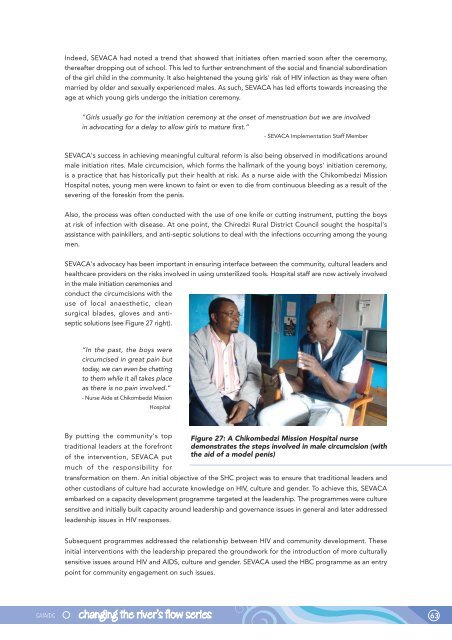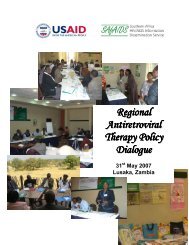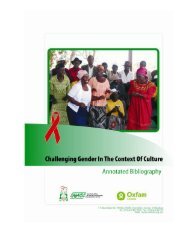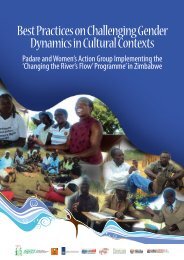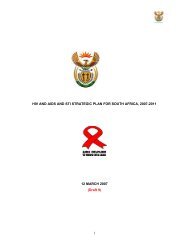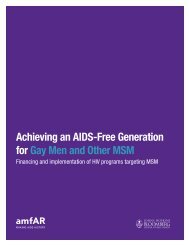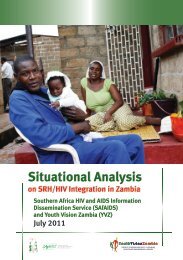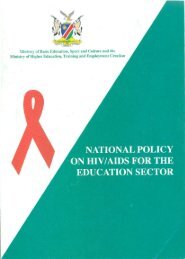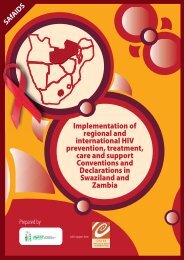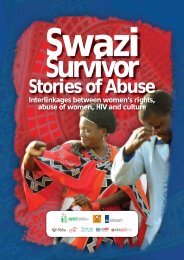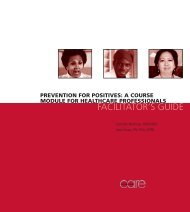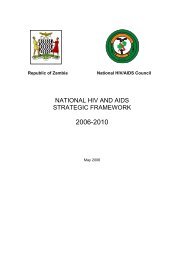Zimbabwean stories of "Best Practice" - SAfAIDS
Zimbabwean stories of "Best Practice" - SAfAIDS
Zimbabwean stories of "Best Practice" - SAfAIDS
Create successful ePaper yourself
Turn your PDF publications into a flip-book with our unique Google optimized e-Paper software.
Indeed, SEVACA had noted a trend that showed that initiates <strong>of</strong>ten married soon after the ceremony,thereafter dropping out <strong>of</strong> school. This led to further entrenchment <strong>of</strong> the social and financial subordination<strong>of</strong> the girl child in the community. It also heightened the young girls' risk <strong>of</strong> HIV infection as they were <strong>of</strong>tenmarried by older and sexually experienced males. As such, SEVACA has led efforts towards increasing theage at which young girls undergo the initiation ceremony.“Girls usually go for the initiation ceremony at the onset <strong>of</strong> menstruation but we are involvedin advocating for a delay to allow girls to mature first.”- SEVACA Implementation Staff MemberSEVACA's success in achieving meaningful cultural reform is also being observed in modifications aroundmale initiation rites. Male circumcision, which forms the hallmark <strong>of</strong> the young boys' initiation ceremony,is a practice that has historically put their health at risk. As a nurse aide with the Chikombedzi MissionHospital notes, young men were known to faint or even to die from continuous bleeding as a result <strong>of</strong> thesevering <strong>of</strong> the foreskin from the penis.Also, the process was <strong>of</strong>ten conducted with the use <strong>of</strong> one knife or cutting instrument, putting the boysat risk <strong>of</strong> infection with disease. At one point, the Chiredzi Rural District Council sought the hospital'sassistance with painkillers, and anti-septic solutions to deal with the infections occurring among the youngmen.SEVACA's advocacy has been important in ensuring interface between the community, cultural leaders andhealthcare providers on the risks involved in using unsterilized tools. Hospital staff are now actively involvedin the male initiation ceremonies andconduct the circumcisions with theuse <strong>of</strong> local anaesthetic, cleansurgical blades, gloves and antisepticsolutions (see Figure 27 right).“In the past, the boys werecircumcised in great pain buttoday, we can even be chattingto them while it all takes placeas there is no pain involved.”- Nurse Aide at Chikombedzi MissionHospitalBy putting the community's top Figure 27: A Chikombedzi Mission Hospital nursetraditional leaders at the forefront demonstrates the steps involved in male circumcision (with<strong>of</strong> the intervention, SEVACA put the aid <strong>of</strong> a model penis)much <strong>of</strong> the responsibility fortransformation on them. An initial objective <strong>of</strong> the SHC project was to ensure that traditional leaders andother custodians <strong>of</strong> culture had accurate knowledge on HIV, culture and gender. To achieve this, SEVACAembarked on a capacity development programme targeted at the leadership. The programmes were culturesensitive and initially built capacity around leadership and governance issues in general and later addressedleadership issues in HIV responses.Subsequent programmes addressed the relationship between HIV and community development. Theseinitial interventions with the leadership prepared the groundwork for the introduction <strong>of</strong> more culturallysensitive issues around HIV and AIDS, culture and gender. SEVACA used the HBC programme as an entrypoint for community engagement on such issues.63


